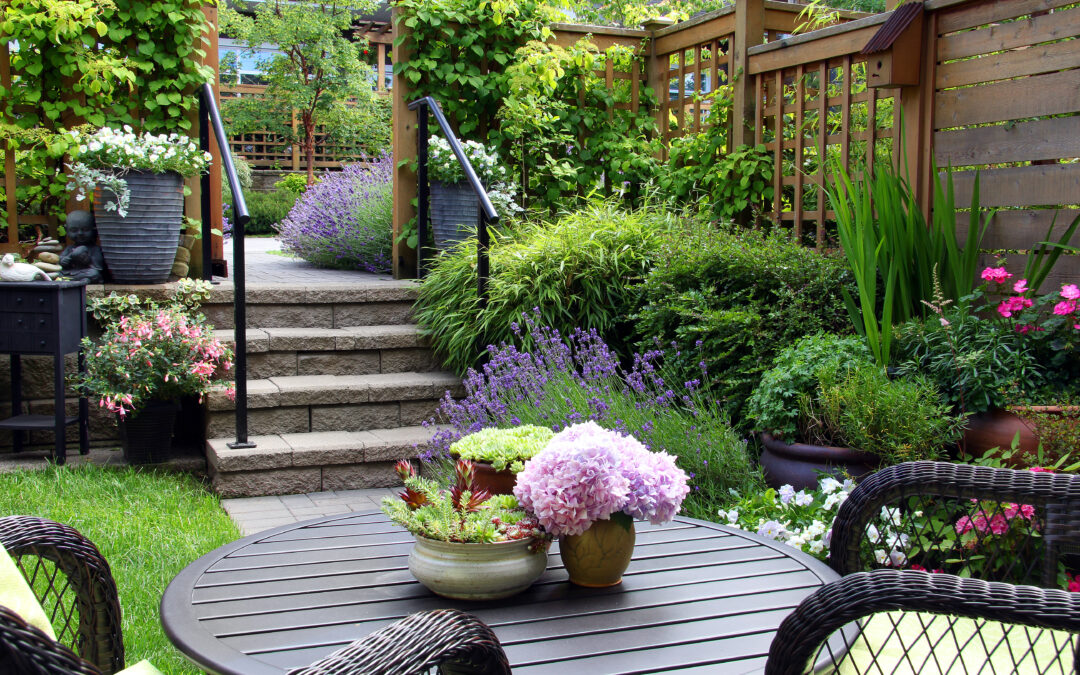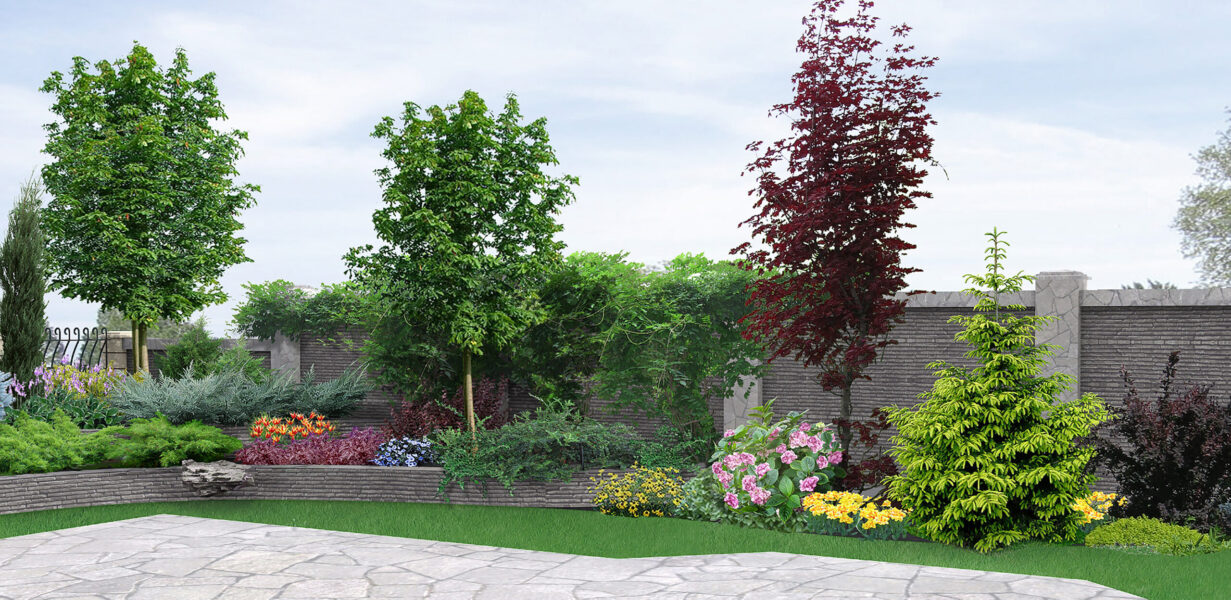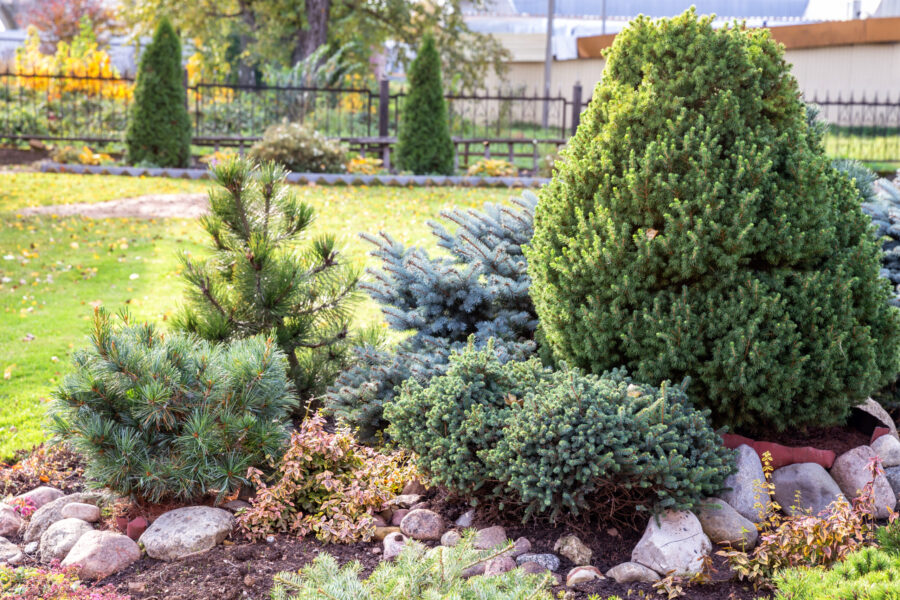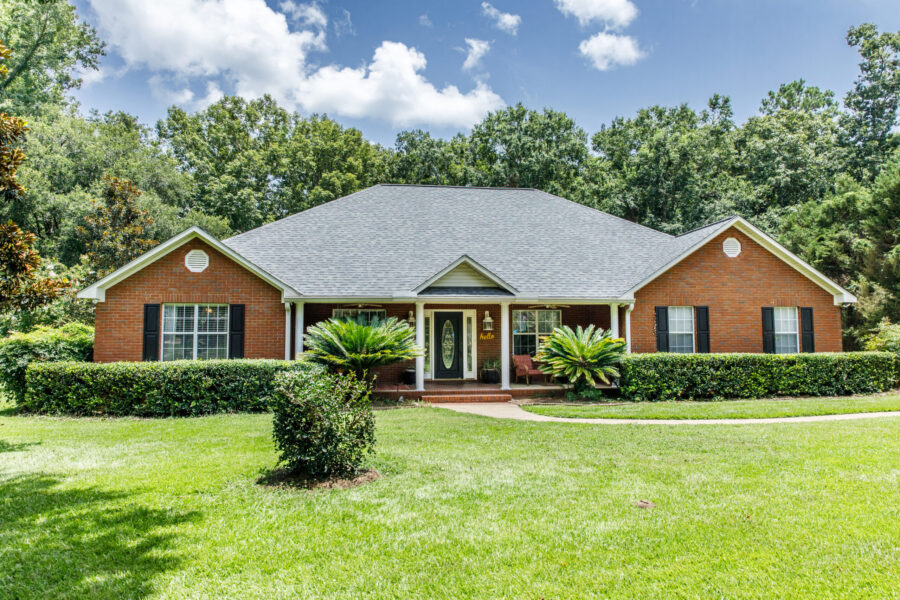We all want our landscape to look as good as possible. Landscape design success doesn’t happen by accident. There are several key elements that you can consider in designing landscape that will stand out in your community!
1. Color – First point in landscape design
In landscape, perhaps the most important element is color. Everyone wants the feel of vibrant colorful plants in their landscape, especially for the spring. Colors can be warm or cool. Warm colors such as reds and oranges and yellows seem to advance toward you while cool colors like blue and purple seem to move away from you. Color can be used to create perspective.
2. Line – Directs the eye
Line is the mother of all other artistic elements. Lines are used almost everywhere. Line creates physical flow and connection. They determine pathways, edges, shapes, textures, beds, and entryways. Lines can show perspective and give an illusion of depth and distance in space. Verticals lift the eyes skyward and help give the illusion of expanding a smaller space. Strong horizontals open a space up and make it feel broader. Lines can also elicit emotional responses. Sharp straight lines are formal, rigid, and direct while curved lines are gentler and more natural. Line draws the eye to the focal point of your landscape design.
3. Unity = Harmony
Unity involves consistency. It uses repetition. You can repeat colors, or plants, or a pattern. You can also create a common unit or theme for your landscape. The basic idea is that all the elements in your landscape feel as if they belong together in some way. Another way to describe unity is harmony.
4. Repetition – Pursue balance
Repetition is a partner to unity. Having too many different things in your design can make it appear haphazard and cluttered. You want things to be related. On the other hand, having too much of the same thing over and over becomes boring, monotonous, and uninteresting. The key is to find a balance.
5. Form – Shapes define landscapes as formal or casual
Form refers to the shapes of objects in a landscape. Many forms exist in a landscape such as the rectilinear shapes of the house, walkways, and driveways. Plants, topography, and hardscape delineate other forms that may include squares, circles, triangles, or irregular shapes. Landscape forms evoke emotions and create ambiance. Rectilinear forms feel structured and formal, circles are soft, triangles are strong, and irregular shapes are casual and free. When designing landscape form strive to complement the style of the house.
6. Balance – How do you get it right?
Speaking of balance, balance is a sense of equality. Remember, our brain is pleased with balance. On one hand, your landscape could have symmetrical balance, with two matching sides across a center line. On the other hand, you can have asymmetrical balance that has differences on each side. Even with differences, we still can have balance. For example, you do not one side of your landscape to be full and busy and the other side sparse. Don’t forget to think about your open spaces as well as your full spaces in considering balance. To put it another way, negative space is as important as the positive.
7. Transition – Not just bridges
Transition refers to a gradual change. You do not want to jump from one thing to the next, sporadically, but want to move along towards it in a gradual flow. For example, vary plant sizes by starting very small and moving up larger and larger as you go. In addition, you might vary color from warms to cools.
8. Contrast – Strategy to highlight certain elements and features
Contrast in your landscape design will call attention to and highlight certain elements. When contrasting elements are next to one another, they draw our eye. Certainly, you can have contrasting colors, contrasting textures, contrasting plants, or even contrasting ground cover.
9. Texture – A variety of texture adds interest
Texture is a surface characteristic that can be divided into three categories: Coarse, Medium, and Fine. With this in mind, plants, pavements, and other site elements all have their own texture. Therefore, using a variety of textures in a landscape can provide a surprising effect.
10. Proportion – Landscape design out of proportion can be jarring
Proportion is a reference to size, particularly the relation of the size of one element as it compares to another.
At Aisling View we have years of experience putting all these elements to work to make your landscape stand out from the crowd!
Are you on Facebook? We are, too. Let’s be friends!







Recent Comments